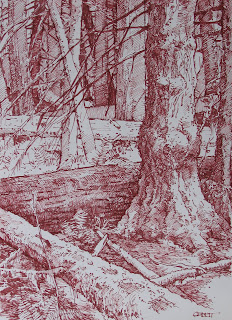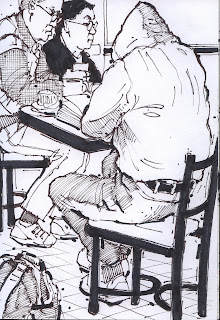I have been challenged to clarify the issues of an
unfolding view of cultural engagement. These issues have resulted from an
inherent conflict between one view that advocates engaging culture, and a
second view that advocates a withdrawal from engaging culture, even rejecting
culture. I posit a preferred, or third view, namely that of informing culture
as the real essence of engagement. The inquiry into cultural
engagement begins with the metaphor of the Petri
Dish, that unique place where cultures are grown, hence its pseudonym, the Culture Dish, and as a place where any engagement often looks and feels more like an unconscious ballet.
Among
respective contributions by other scholars to the discourse and inquiry, I
found a rich aggregate of research to substantiate the growth of my views
inside the Culture Dish. By examining
such concepts as defining culture, Christ
and culture, two views of engaging culture, and a third preferred view of
informing culture, the tension between the two is resolved in the third, by
asking the question, “how should we then live?”
Defining cultural
engagement in a preferred view, is to
define cultural engagement in a less provocative, non-redemptive way as
activities of people, offering a more informed way of clarifying the issues
through a new kind of seeing, where things become new by unfolding the issues.
An informed culture is a culture that can think critically about the manner in
which that culture has been engaged. In defining culture, I submit that it is
an ontological and epistemological problem of assumptions about what it is to
be Christian. The basis on which
such assumptions are founded, especially in the conventional use of Christian as an adjective, is invalid. What
is valid, is the emergence of the artist’s role in a technological world, as
the artician in ministry, with a
prophetic imagination to produce a creative surround within culture. This
creative surround can find expression in a stylistic approach such as the
narrative manner, a literary manner, or a mixed-style manner, each meant to
enhance the artician’s process of
communication and processing of positive information, towards a meaningful
cultural engagement of knowledge sharing.
As such, research
into the issue of engaging culture must aim towards informed leadership, that
is, an engaged leadership whose mandate is not adversarial or controversial. It
is a leadership in which the artician participates
within an informed mandate.
A preferred
strategy of informing culture, comprises the unfolding view of cultural
engagement as a means to introduce others to the lives we live, whether by
allegory, metaphor, narrative, didactic, dialectical engagement, or in a broad
context through the expressive arts. The artician’s
communication mandate is not one of persuasion or conviction based on the
promise of an unforgettable experience, but on the testimony that we ourselves
have an account of our unforgettable
experience.
Image: “Unconscious
Ballet,” No.4 in Series. By Gerrit Verstraete. 2008.
Cat. No. 1059. 30 X 22 in. / 76 X 56 cm. Carbon pencil on paper.













